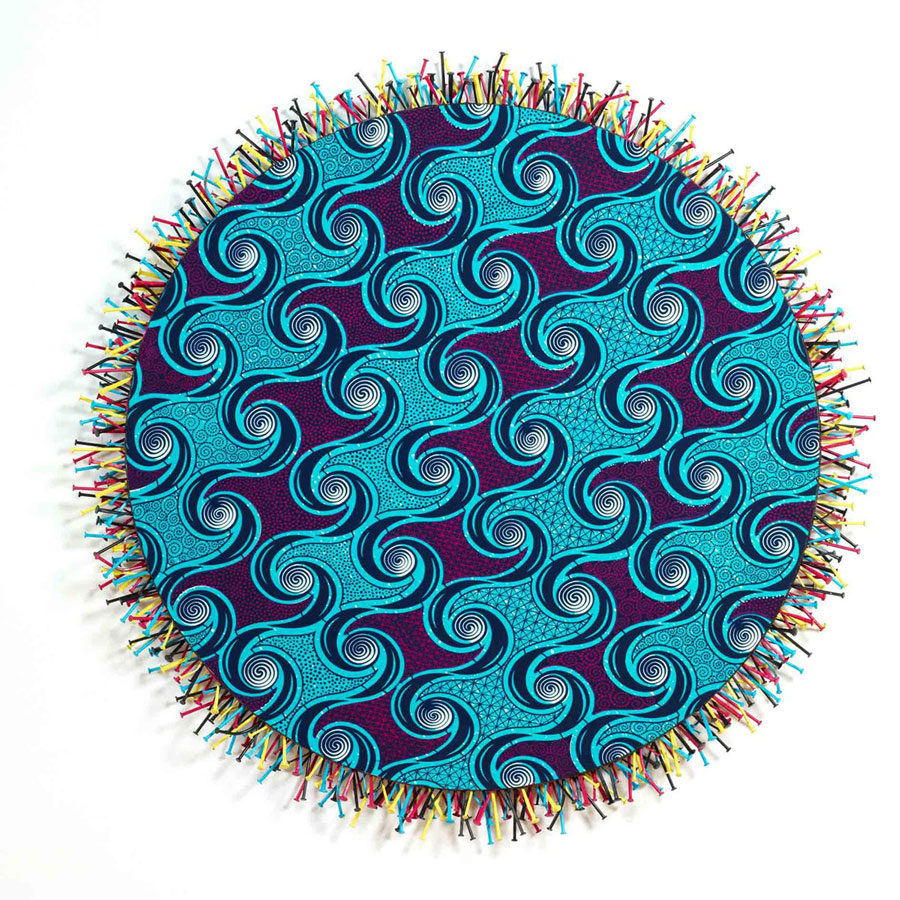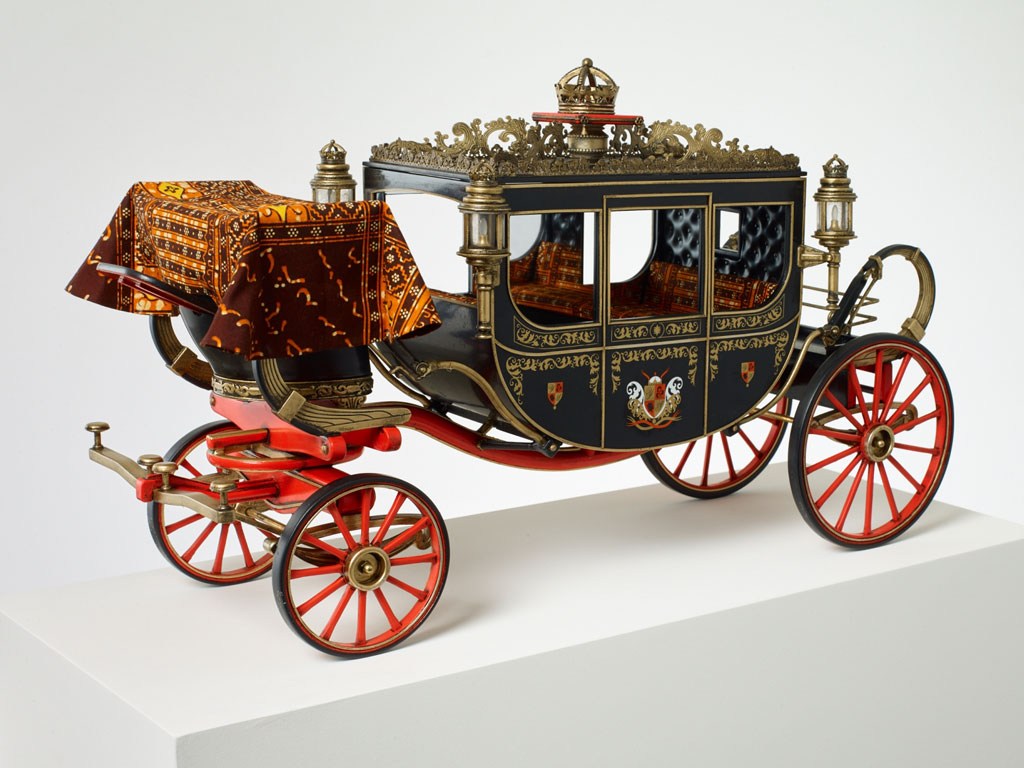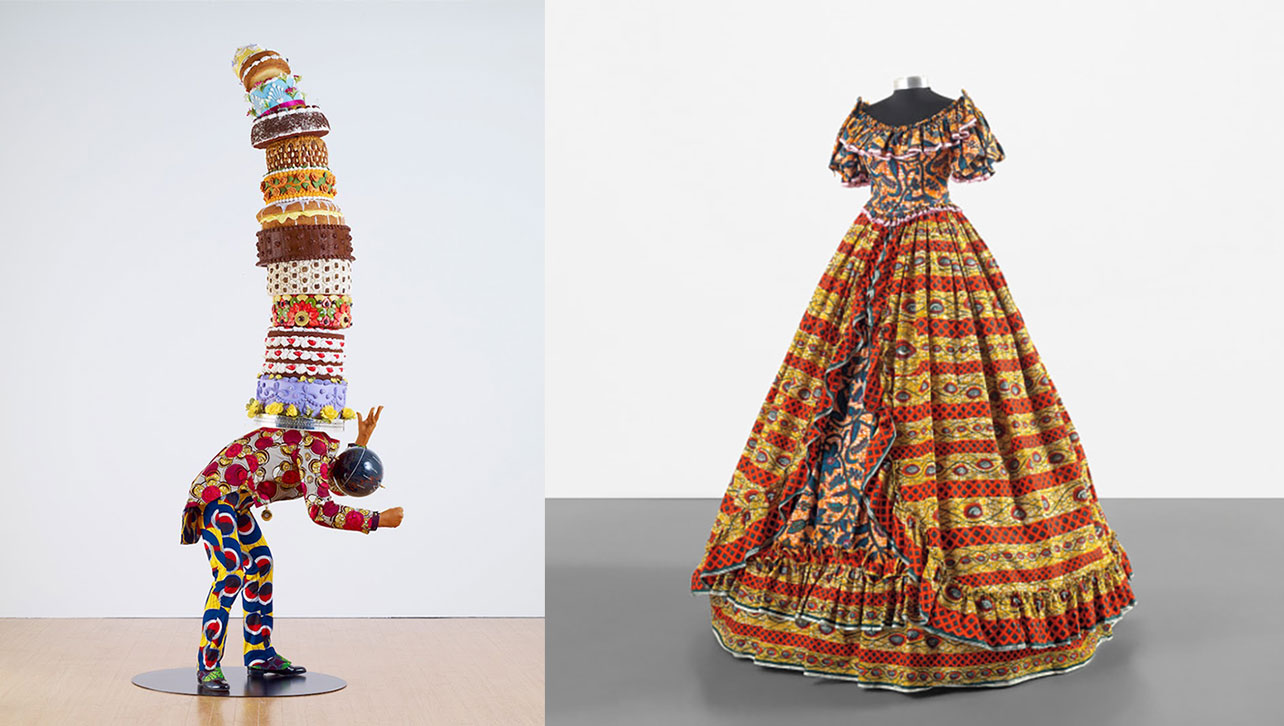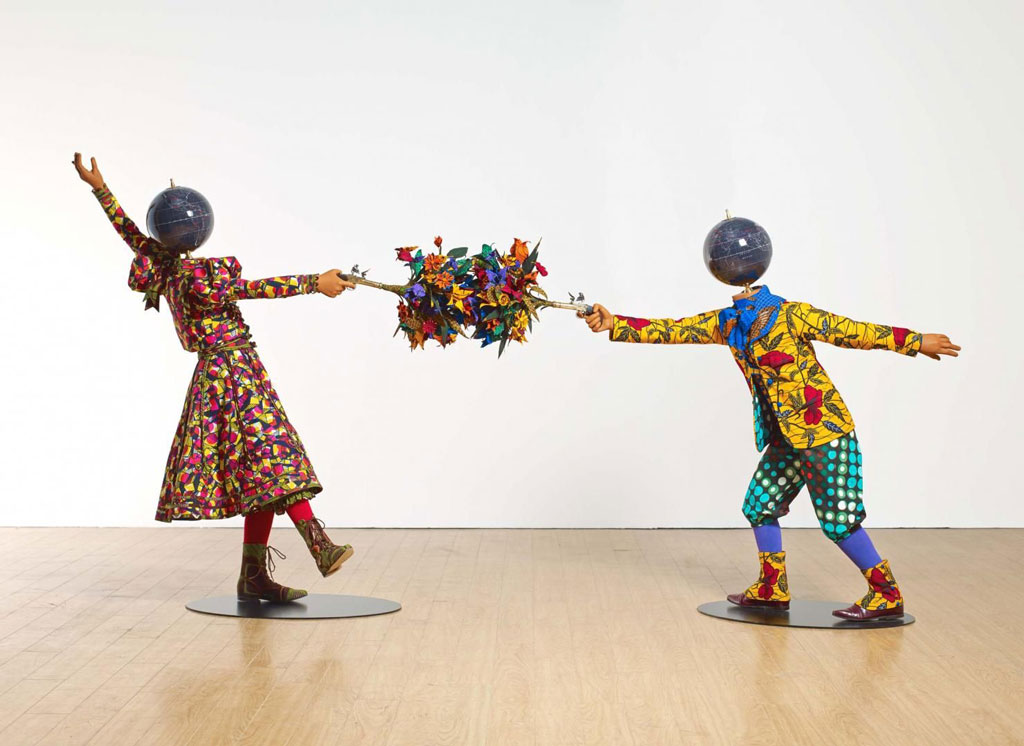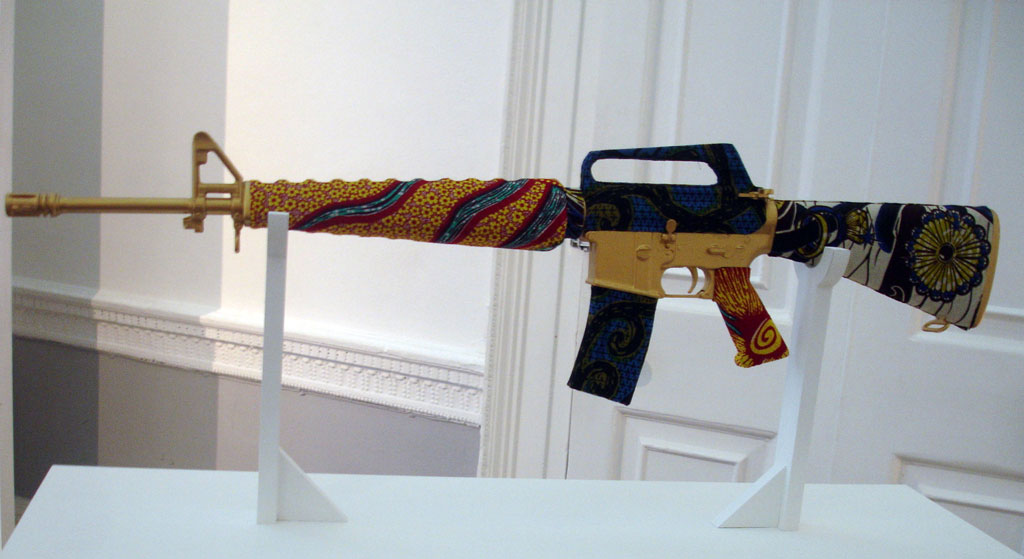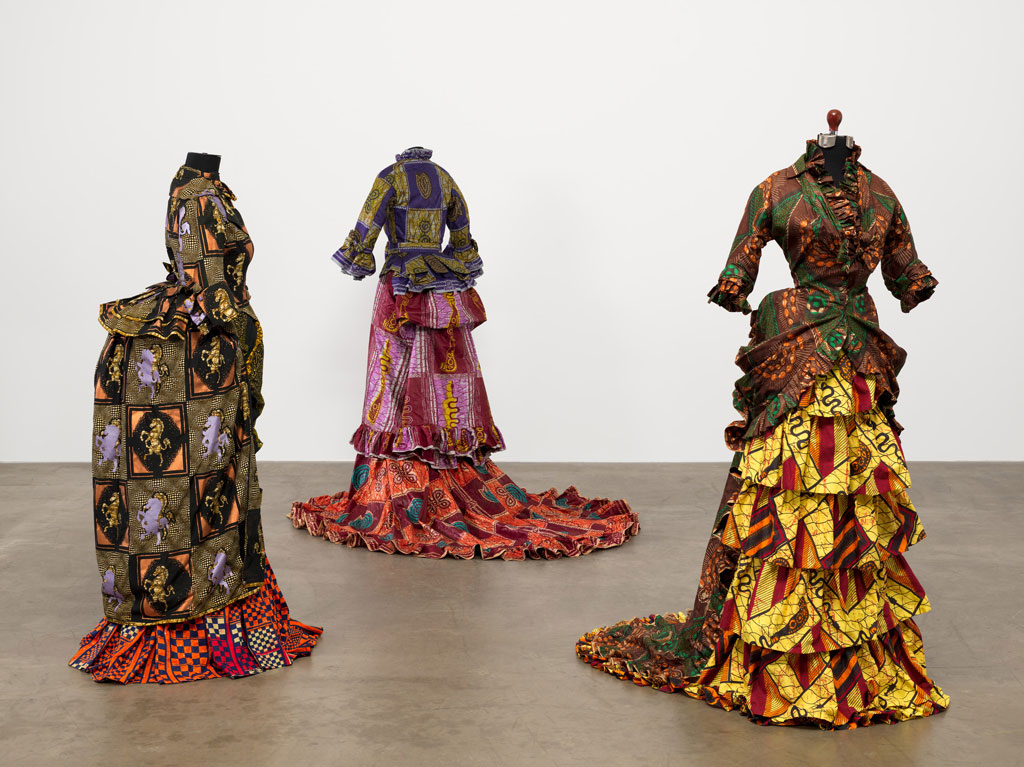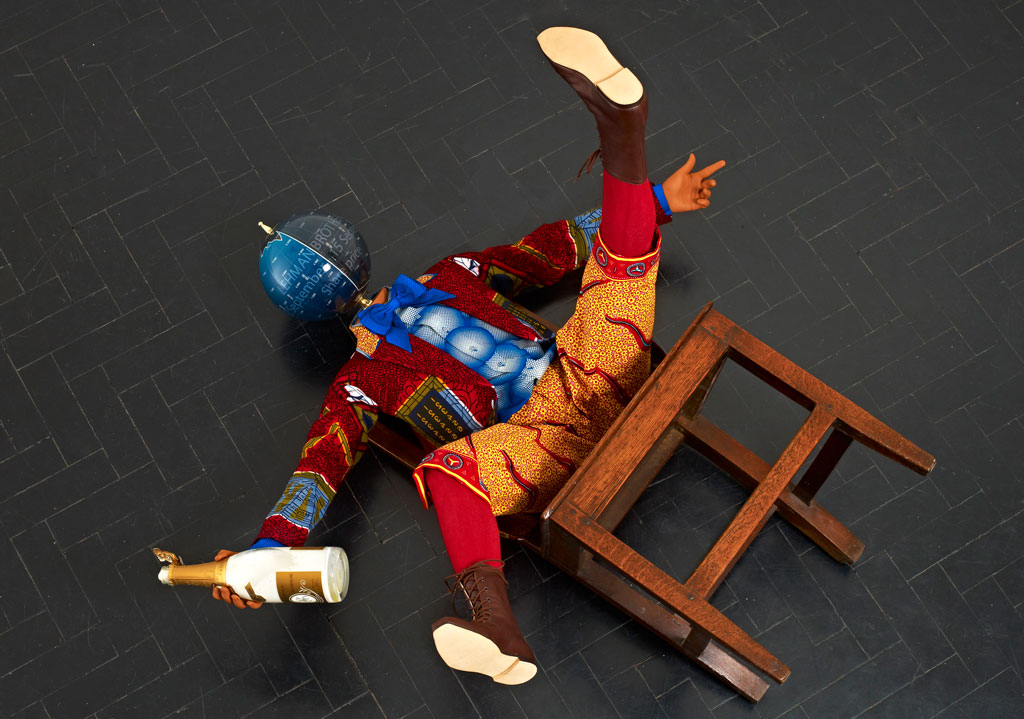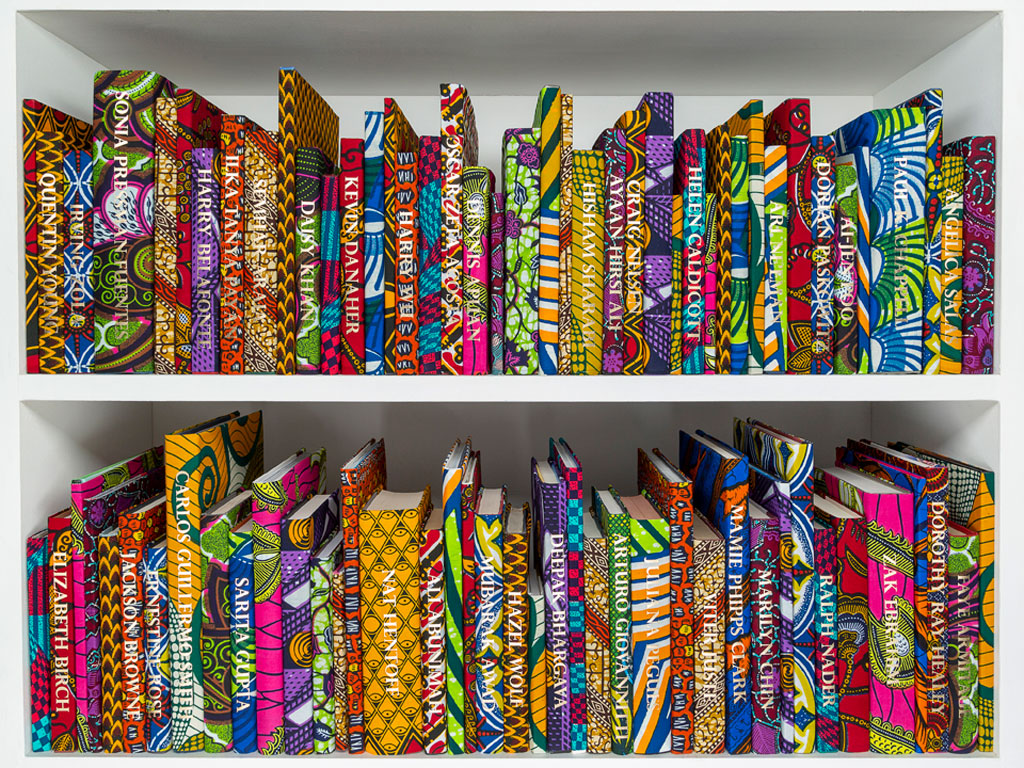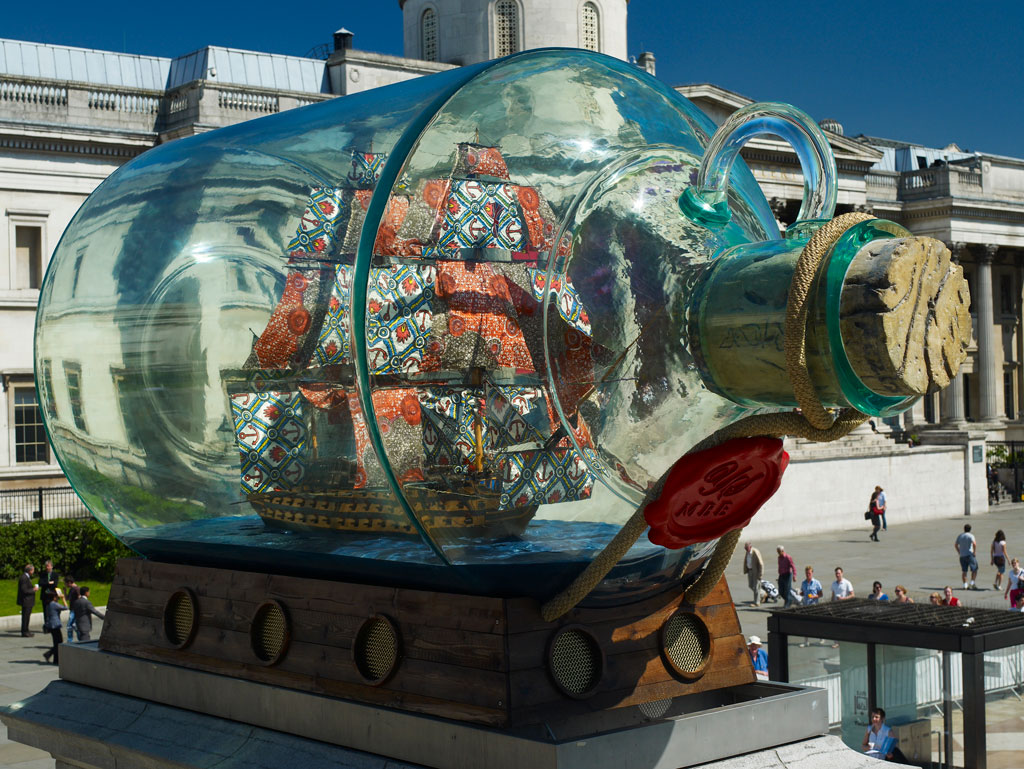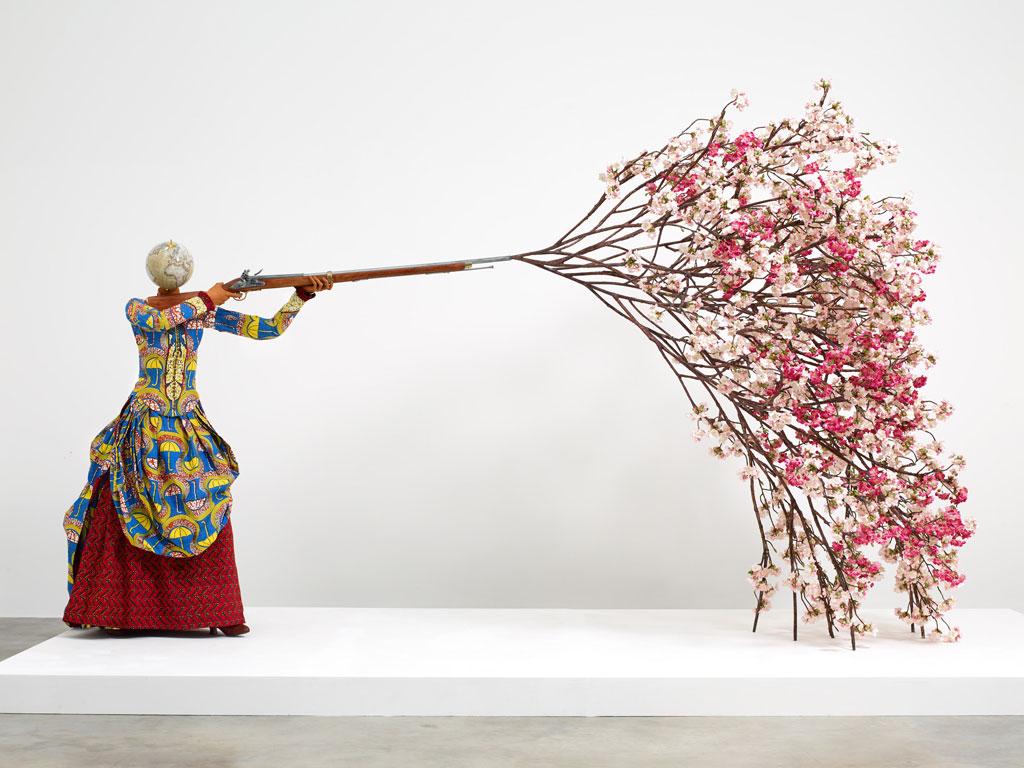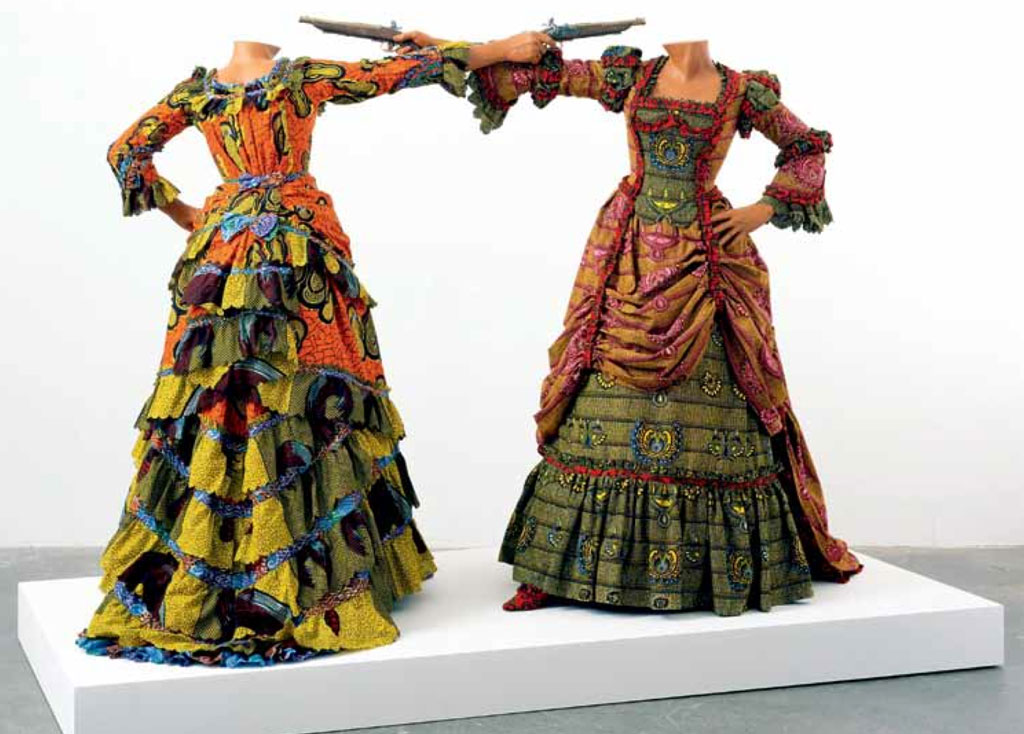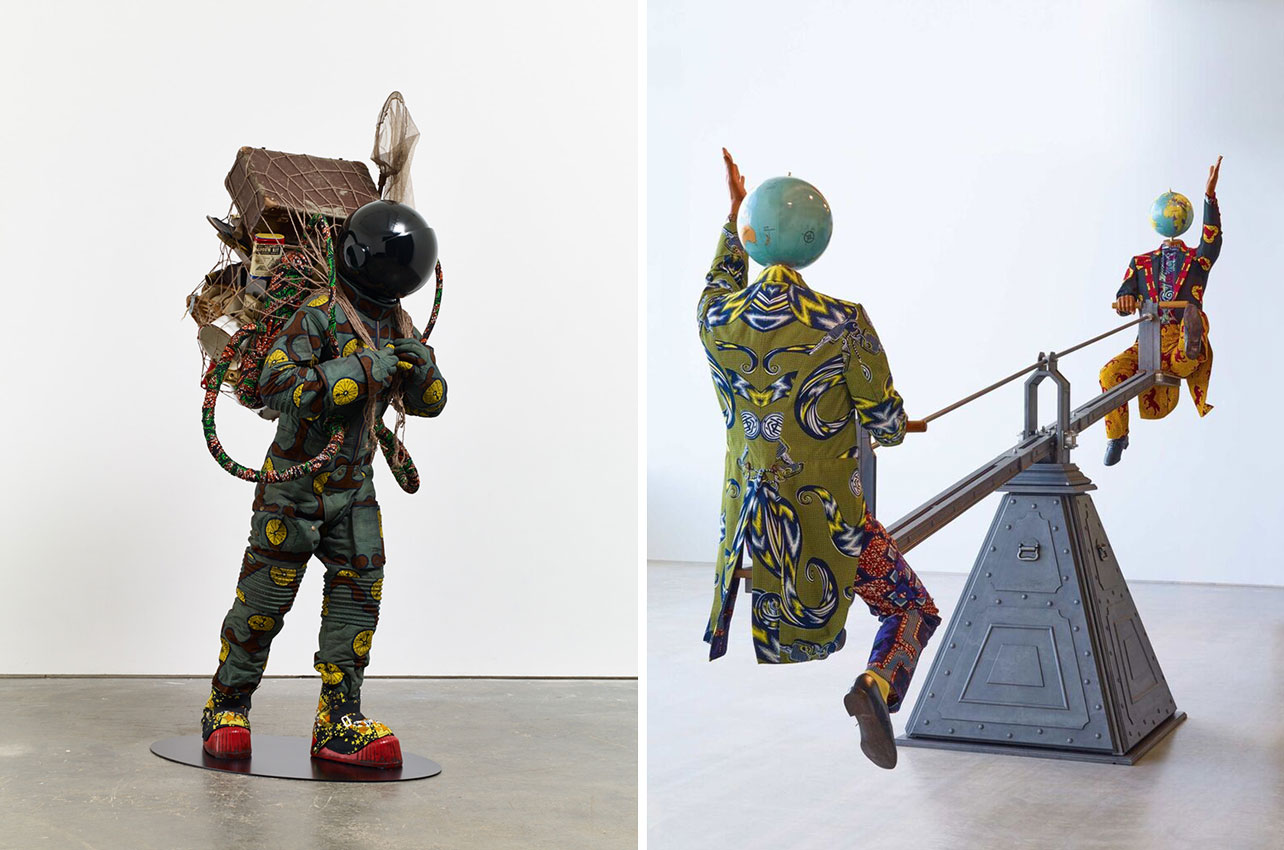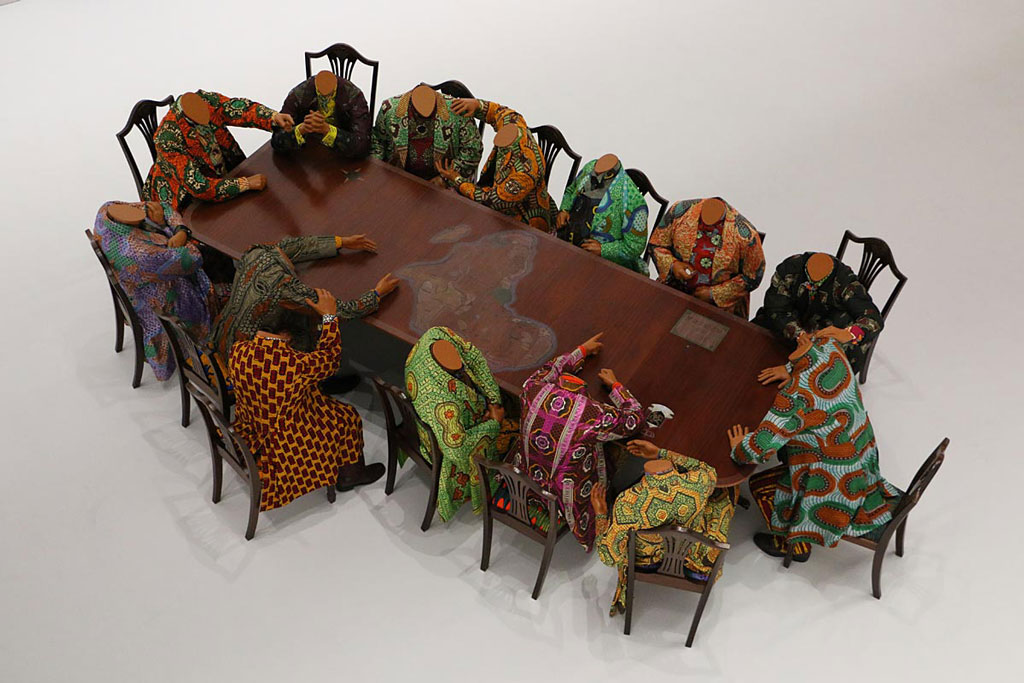ART-TRIBUTE:Weaving and other Practices… Yinka Shonibare CBE (RA)
 We continue our Tribute with Yinka Shonibare, (10/2/1962- ), over the past decade, he has become well known for his exploration of colonialism and post-colonialism within the contemporary context of globalization. Working in painting, sculpture, photography, film and installation, Shonibare’s work examines race, class and the construction of cultural identity through incisive political commentary on the tangled interrelationship between Africa and Europe, and their respective economic and political histories. Shonibare uses wry citations of Western art history and literature to question the validity of contemporary cultural and national identities.
We continue our Tribute with Yinka Shonibare, (10/2/1962- ), over the past decade, he has become well known for his exploration of colonialism and post-colonialism within the contemporary context of globalization. Working in painting, sculpture, photography, film and installation, Shonibare’s work examines race, class and the construction of cultural identity through incisive political commentary on the tangled interrelationship between Africa and Europe, and their respective economic and political histories. Shonibare uses wry citations of Western art history and literature to question the validity of contemporary cultural and national identities.
By Dimitris Lempesis
 Yinka Shonibare was born to wealthy Nigerian parents living in London. When he was about three years old, his family returned to Nigeria, and he grew up in Lagos while continuing to summer in England. Although his parents were disappointed with his chosen career, he was allowed to return to England to attend art school. Just weeks after his classes began, Shonibare came down with transverse myelitis, a disorder caused by inflammation of the spinal cord. After being hospitalized for a year, he entered Byam Shaw School of Art. He received an M.F.A. degree from Goldsmiths’ College. Shonibare’s art was placed on its trajectory by the comments of one of his teachers, who asked him why he didn’t make “authentic African art”. As someone who had spoken Yoruba at home yet watched British and U.S. television, was perfectly fluent in English, and had lived in both England and urban Nigeria, the artist pondered the meaning of authenticity and the greater significance of his multicultural identity. Although Shonibare’s work was included in the 1997 traveling exhibition “Sensation: Young British Artists from the Saatchi Collection” and he was a contemporary of members of Young British Artists, he considered his concerns to be quite different from theirs. Beginning from 1990, Shonibare has been using brightly coloured “African” fabric otherwise known as Dutch wax-printed cotton. He buys the fabrics from Brixton market in London. His continuous use of these fabrics on all his artworks has made it his trademark. In part because of his experimentation with so many media, Shonibare’s work defies easy categorization. In paintings such as “Double Dutch” (1994), he created a large work by painting a rectangle on a wall and placing on it a grid of several small stretchers covered with the Dutch wax-printed fabric. He then began using these textiles to create costumes in the Victorian style for mannequins. These brightly clothed mannequins sometimes were headless and sometimes had objects such as globes in place of human heads . In such works as “Diary of a Victorian Dandy” (1998) based on the narrative works of British artist William Hogarth), Shonibare created a series of photographs featuring himself as a dandy in a variety of tableaux. He also portrayed the protagonist of an Oscar Wilde novel in the photographic series “Dorian Gray” (2001). Many of Shonibare’s works made reference to paintings by earlier artists, among them Jean-Honoré Fragonard, Francisco de Goya, and Leonardo da Vinci. Shonibare was a Turner prize nominee in 2004, and was also awarded the decoration of Member of the “Most Excellent Order of the British Empire” or MBE, a title he has added to his professional name. Shonibare was notably commissioned by Okwui Enwezor at Documenta 11, Kassel, in 2002 to create his most recognised work “Gallantry and Criminal Conversation” that launched him on to an international stage. Shonibare’s work, “Nelson’s Ship in a Bottle” was the 2010 Fourth Plinth Commission, and was displayed in Trafalgar Square, London, until January 2012. It was the first commission by a black British artist and was part of a national fundraising campaign organized by the Art Fund and the National Maritime Museum. In 2012, the Royal Opera House, London, commissioned “Globe Head Ballerina” (2012) , the life-sized ballerina encased within a giant ‘snow globe’ spins slowly as if caught mid-dance, the piece appears to encapsulate a moment of performance as if stolen from the stage of the Royal Opera House. In 2017 “Wind Sculpture VI” was featured in the courtyard of the Royal Academy of the Arts, London as part of the Royal Academy Summer Exhibition. Shonibare was also commissioned by the Yale Center for British Art to create “Mrs Pinckney and the Emancipated Birds of South Carolina”.
Yinka Shonibare was born to wealthy Nigerian parents living in London. When he was about three years old, his family returned to Nigeria, and he grew up in Lagos while continuing to summer in England. Although his parents were disappointed with his chosen career, he was allowed to return to England to attend art school. Just weeks after his classes began, Shonibare came down with transverse myelitis, a disorder caused by inflammation of the spinal cord. After being hospitalized for a year, he entered Byam Shaw School of Art. He received an M.F.A. degree from Goldsmiths’ College. Shonibare’s art was placed on its trajectory by the comments of one of his teachers, who asked him why he didn’t make “authentic African art”. As someone who had spoken Yoruba at home yet watched British and U.S. television, was perfectly fluent in English, and had lived in both England and urban Nigeria, the artist pondered the meaning of authenticity and the greater significance of his multicultural identity. Although Shonibare’s work was included in the 1997 traveling exhibition “Sensation: Young British Artists from the Saatchi Collection” and he was a contemporary of members of Young British Artists, he considered his concerns to be quite different from theirs. Beginning from 1990, Shonibare has been using brightly coloured “African” fabric otherwise known as Dutch wax-printed cotton. He buys the fabrics from Brixton market in London. His continuous use of these fabrics on all his artworks has made it his trademark. In part because of his experimentation with so many media, Shonibare’s work defies easy categorization. In paintings such as “Double Dutch” (1994), he created a large work by painting a rectangle on a wall and placing on it a grid of several small stretchers covered with the Dutch wax-printed fabric. He then began using these textiles to create costumes in the Victorian style for mannequins. These brightly clothed mannequins sometimes were headless and sometimes had objects such as globes in place of human heads . In such works as “Diary of a Victorian Dandy” (1998) based on the narrative works of British artist William Hogarth), Shonibare created a series of photographs featuring himself as a dandy in a variety of tableaux. He also portrayed the protagonist of an Oscar Wilde novel in the photographic series “Dorian Gray” (2001). Many of Shonibare’s works made reference to paintings by earlier artists, among them Jean-Honoré Fragonard, Francisco de Goya, and Leonardo da Vinci. Shonibare was a Turner prize nominee in 2004, and was also awarded the decoration of Member of the “Most Excellent Order of the British Empire” or MBE, a title he has added to his professional name. Shonibare was notably commissioned by Okwui Enwezor at Documenta 11, Kassel, in 2002 to create his most recognised work “Gallantry and Criminal Conversation” that launched him on to an international stage. Shonibare’s work, “Nelson’s Ship in a Bottle” was the 2010 Fourth Plinth Commission, and was displayed in Trafalgar Square, London, until January 2012. It was the first commission by a black British artist and was part of a national fundraising campaign organized by the Art Fund and the National Maritime Museum. In 2012, the Royal Opera House, London, commissioned “Globe Head Ballerina” (2012) , the life-sized ballerina encased within a giant ‘snow globe’ spins slowly as if caught mid-dance, the piece appears to encapsulate a moment of performance as if stolen from the stage of the Royal Opera House. In 2017 “Wind Sculpture VI” was featured in the courtyard of the Royal Academy of the Arts, London as part of the Royal Academy Summer Exhibition. Shonibare was also commissioned by the Yale Center for British Art to create “Mrs Pinckney and the Emancipated Birds of South Carolina”.
